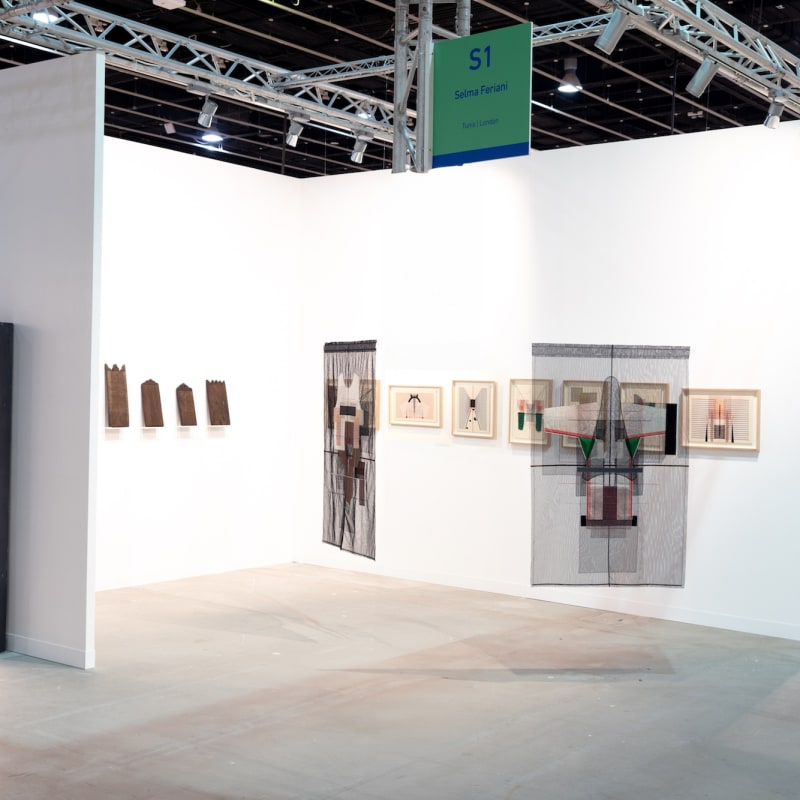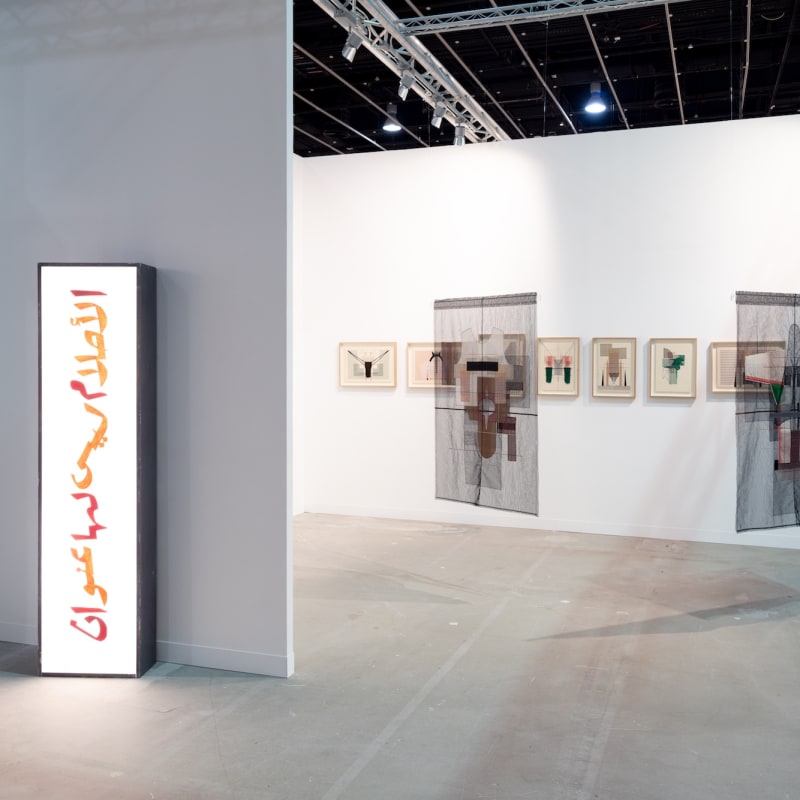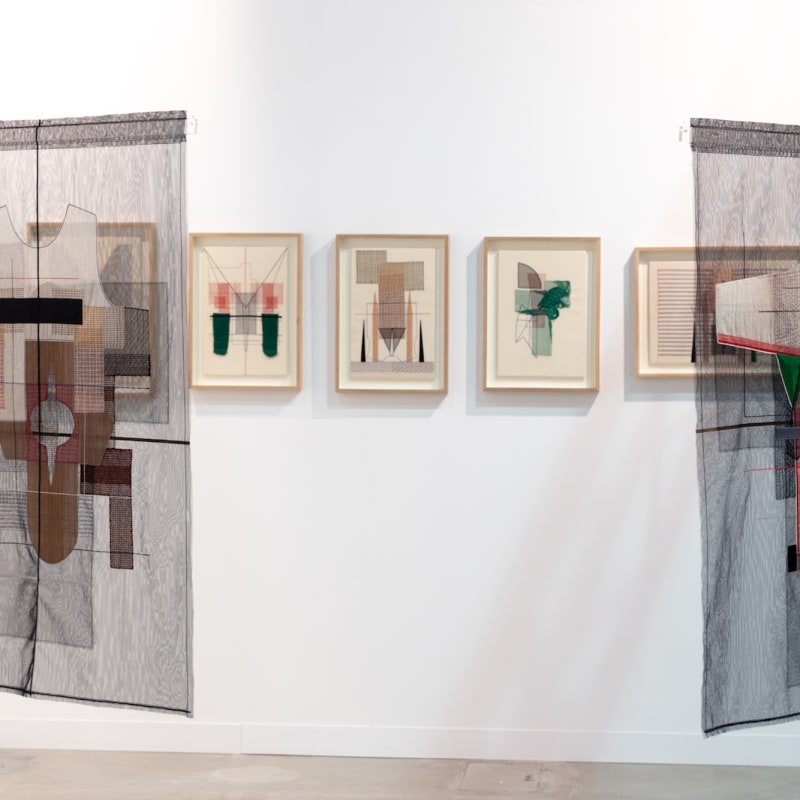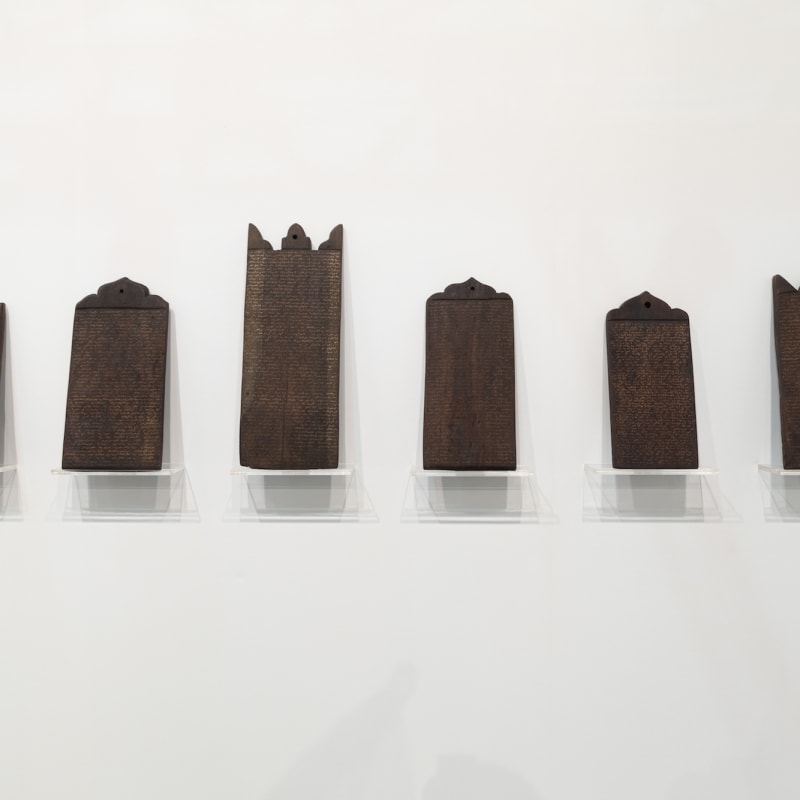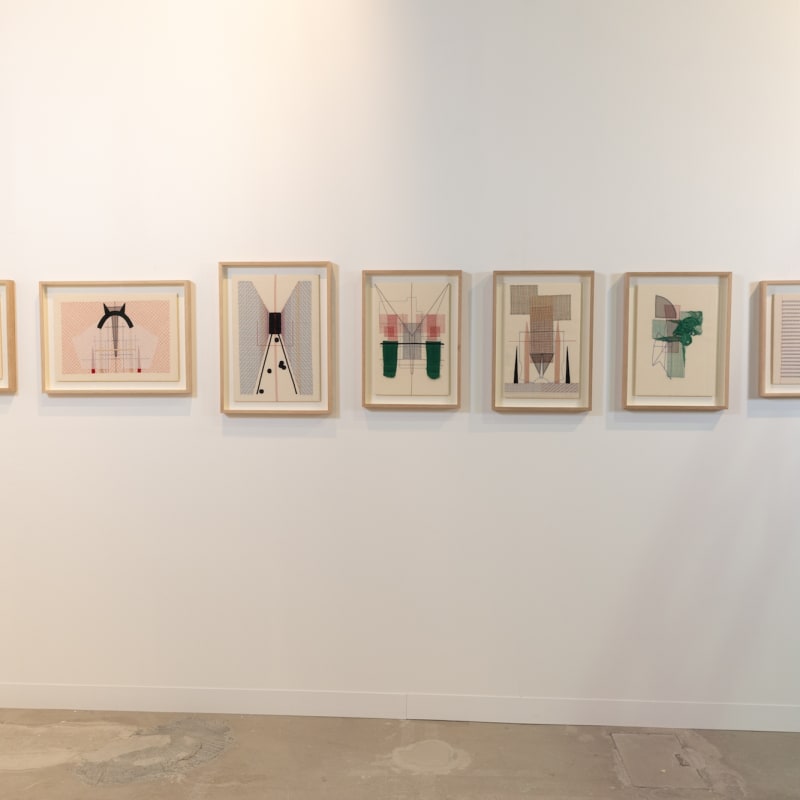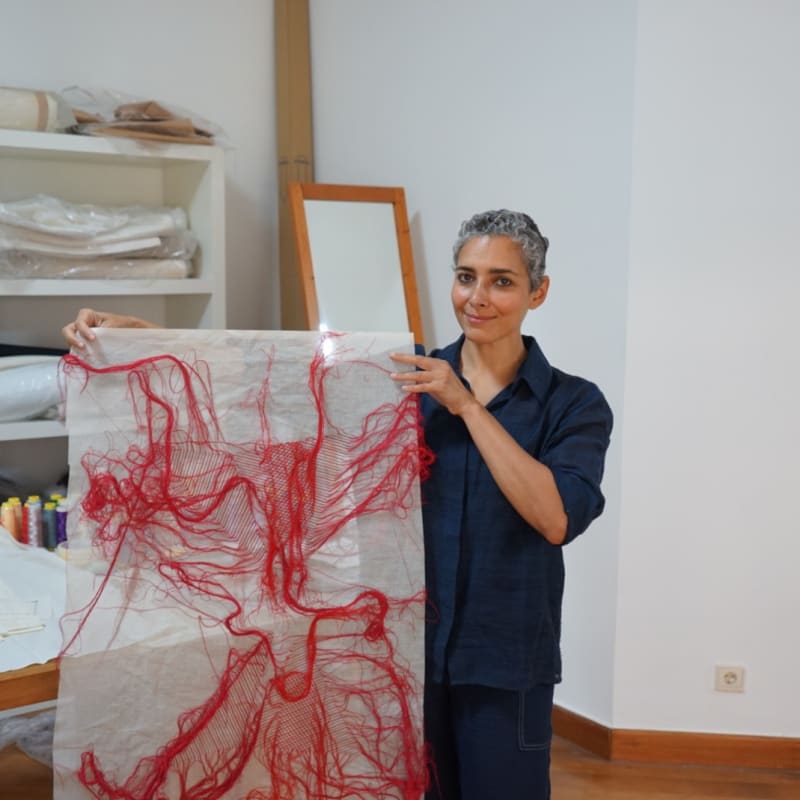Selma Feriani is delighted to present works by Filwa Nazer, Nicène Kossentini, and Zineb Sedira for the curated section of the fair.
Love is a rose,
Each petal an illusion,
Every thorn a reality
Charles Baudelaire
In a world full of turbulence, the petals of the corolla symbolically reconcile the splintered history of East and West, a history shaped by division since the last Roman Emperor Theodosius in 395, after whom Rome and Constantinople became two distinct entities.
Choosing to unite women around an artistic project means confronting the inequalities that have existed historically between artists of opposite sexes, that have led to a late recognition of the female artist. This project is an attempt to rectify these gaps and divisions, but above all it is a re-constituting of the forgotten stories of certain women in history, many of whom were actors of change and contributed greatly to shaping various cultures and religions.
Islamic history, for example, illuminates the achievements of emirs, sultans and imams whilst occluding stories in which women have played a key role. However, it is important to take a more attentive look at the importance of women in Islam. It raises the question of why these stories and stories have not been transmitted to us differently or let us say, in a more insistent way. We often wonder if history would have been different, if the conquest of Kairouan by Oqba Ibn Nafi and the construction of the first Muslim university by Fatima al-Fehria, had been given equal weight in their retelling?
How would contemporary history be shaped, if Khadija Bint Khuayled, the first wife and follower of the Prophet Mohammad or scholar and poet Aicha Bint Abi Bakr, who provides one of the most prolific eyewitness accounts relating to the Prophet (SAW) were given due recognition in the development of Islam? In the search for forgotten stories, we wonder if there would have been more holy places dedicated to Sufi women, if the story of Rabia al-Adawiyya were not so unknown, reduced to legend and myth. And yet, Rabia, the most influential renunciant in Islamic history, shows us that being a woman does not exclude the possibility of reaching the highest spiritual rank.
There is no shortage of examples to follow, in retracing these lives. The bravery and contribution of such women serves as an exemplar for conservatives of all stripes who seek to justify the distancing of women from politics and the public sphere. This project is therefore a way to recall these forgotten stories through contemporary art, by bringing together artists of different generations, diverse cultures and practices ranging from painting to installations.
The choice of works in this section of the Abu Dhabi Art fair materially advocate the fragility of stories, in their use of ceramics, paper and textiles. A poignant discourse emerges on topics that range from gender equality, to globalization and women's interest in cultural tradition and transmutation, all the while making reference to female resilience. Woven, carved or folded narratives are presented as a substitute for the silence of women throughout history, a form of resistance.
The artists included such as Filwa Nazer (Selma Feriani Gallery), Meriam Bouderbela (Venise Cadre Gallery) and Monica Bengoa (Aminat Gallery), are from different cultures and generations, but united around a story that is both fragile in its material form and searing in its content.
And if each petal of the corolla were a story, those of Zoulikha Bouabdalah (Venise Cadre Gallery) and Maha Maluh (Krinzinger Gallery) echo each other, by engaging in socio-political issues linked to conflict, globalization and its impact on our daily lives, particularly in the context of Arab-Muslim countries.
From a political questioning through to sociology, we are then taken on a spiritual route, with the works of Nicene Kossentini (Selma Feriani Gallery) who plays with black and white contrasts, creating minimalist environments, in a search for aesthetics, beauty and poetry that articulates our inner strength.
Oscillating between a story that contemplates birth and death and that of a hymn to life, the paintings of Franco-Moroccan Najia Mahdji (Veronique Rieffel Gallery) and Lebanese artist Samia Ousseiran Junblat (Agial Art Gallery) resonate together, creating links between the cosmic and the human, the body and the soul, the visible and the invisible. Between the drawing and painting of flowers, fruits and tree trunks, to the purely abstract forms, we are faced with the pictorial force of these redoubtable artists. In a story, always pictorial, moving from the abstract to the figurative, the oversized canvases of the Syrian artist Mardam Bey (Wadi Finan Gallery) are full of underlying emotions; layers of color and intricate details that adorn her subjects, she creates a community of otherworldly creatures, captivated by her use of overwhelming color and mesmerizing techniques: it is humanity that animates this artist's brush.
It is impossible to talk about historical stories and contemporaneity without evoking the world of post-internet artists, Alymamah Rashed (Tabari Art Space) and Yaccout Kabbaj (Gallery Venice Cadre) who transform engines and forms of technology into painting. One does so to negotiate her female subjectivity, the regional folklore and everyday mundane objects she encounters, as well as the social changes she has witnessed, such as the rapid industrialization of the Gulf. The other, (Yaccout) freezes digital moments of error by superimposing layers of paintings, revealing representations of patriarchal domination, which, according to the artist, have relegated women to the margins.
In thinking about this project, it is simply important for us to open up a different path and to verify that it leads, like others no doubt, to the heart of the subject of the forgotten or little-told stories of women in history, and this, through the artistic story which itself opens debates on political, spiritual and social subjects... Finally, each petal of the corolla carries not only the story of the contemporaneity of these female artists, but also that of the history and stories of every woman.
Essia Hamdi
Curator
